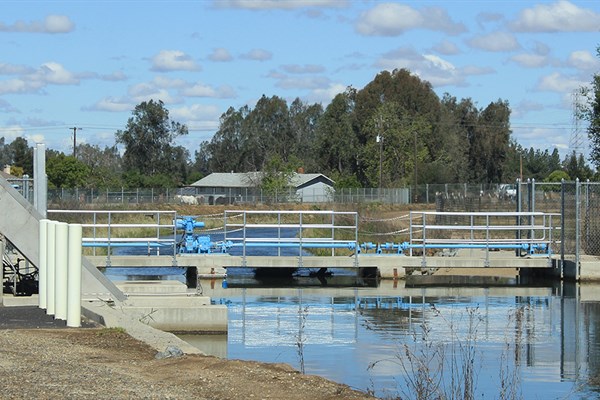
With the recent heat wave producing record-breaking temperatures across the Valley, residents may be concerned about another drought. Always proactive, Clovis city council members discussed future water supply and demand at its July 12 meeting.
After much discussion, the council adopted a resolution to its 2020 Urban Water Management Plan (UWMP) and updated its Water Shortage Contingency Plan (WSCP), both of which were first established by Clovis in 2009 as a response the California water conservation acts enacted to maintain efficient use of water during times of drought.
The UWMP assesses long-term water use and supply over 20 years. The plan will last until 2040, with required updates every five years.
“What the UWMP does is to show that we have that water supply to serve the growth that’s projected over this 20-year horizon,” Paul Armendariz, Clovis’ assistant public utilities director said. “It doesn’t end there. We’re continuing to plan for beyond that, [and] to serve our general plan.”

Clovis serves 24,828 acre-feet of water per year — an acre-foot is the size of a football field and is around 326,000 gallons of water. Water is provided to Clovis and the Tarpey Village area population — totaling over 122,000 residents.
Armendariz projects that by 2040 the combined water use would total 34,798 acre-feet, and the combined population would reach 178,109 due to Clovis having a 1.9% growth rate per year.
“We are growing [and] demand will grow too. This plan is planning for that growth in 20 years, [and] to serve water to our residents as the city continues to develop,” Armendariz said. “We have a really good water supply.”
Clovis receives its water from three main sources: surface water (mainly from the Kings River), groundwater (through wells and Kings Subbasin), and recycled water (Clovis Water Reuse Facility). The City also has banking agreements with the Fresno Irrigation District, Waldron Pond and Jameson-Boswell.
The lowest-priced water source for the City is groundwater at $150 to $160 per acre-foot. Surface water through the City’s plant costs $200 an acre-foot, and purchasing water from banking facilities averages around $250 an acre-foot.
In addition to the UMWP, the purpose of the WSCP is to prepare the city to respond to water supply shortages. The WSCP outlines how the city would go about reducing its water use by 50 percent or more, if necessary.
The 2020 WSCP requirements have six shortage levels ranging from up to 10%, 10% to 20%, 20% to 30%, 30% to 40%, 40% to 50%, and over 50%.
Armendariz said that Clovis has a robust water supply system, so the City is unlikely to reach the shortage levels unless there is an issue with a plant or a mandated conservation plan issued by the state.
“We have a robust system as far as water supply. We have our groundwater, surface water, [and] banking water agreements,” Armendariz said. “We are in a good position.”
At the moment, California is once again in the midst of a drought, with Gov. Gavin Newsom declaring a drought emergency in 41 counties, including Fresno County, on May 10.
Additionally, at a July 11 news conference, nine more counties were added to the drought emergency, bringing the total number of counties to 50.
Newsom has yet to implement conservation mandates since the announcement. However, he did ask Californians to limit their water use by 15 percent voluntarily.
Mayor Jose Flores said that the last time Clovis had a shortage it was due to the mitigation plan implemented by the governor and not any fault of the city as Clovis did not lack water as some others did. Flores expressed concern at the July 12 meeting that such a case could happen again and Armendariz confirmed that is a possibility.
Clovis conserves water itself mainly through water waste prevention ordinances, metering, water conservation programs, conservation pricing, and drought rates.
“We’re doing our part conserving water. Our residents have done a really good job, and we’ve been good stewards,” Armendariz said.
Armendariz said that the City has more work to be done and will continue to have projects and plans, including additional recharging, metering, and operating the City’s plants more efficiently.
With the resolution adopted, the City will submit the UWMP and WSCP to the Department of Water Resources within the next 30 days.








